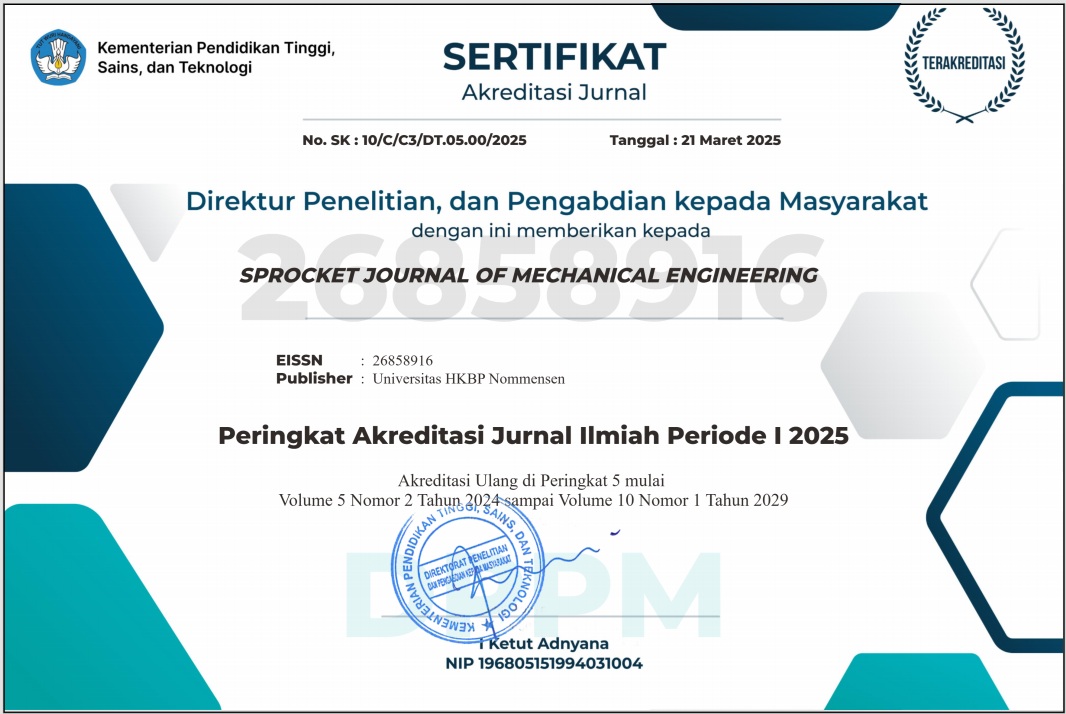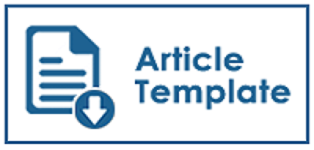Redox Flow Battery Sebagai Perangkat Penyimpanan Energi
Abstract
Energy storage such as vanadium redox flow batteries (VRFB) has increased to store renewable energy resources in the last decade. However, the unbalanced crossover level of vanadium is often a major constraint which has a significant impact on battery capacity and life cycle in long-term operation. Performing an asymmetric electrolyte volume is one of many ways to solve this problem. The different volumes on the positive and negative sides were analyzed to see their effect in suppressing the decrease in VRFB capacity. With the result of the optimal electrolyte excess ratio, long-term cycle performance was carried out to investigate the reduction in capacity of VRFBs.
References
[2]. B. Dunn, H. Kamath, J. Tarascon, Electrical energy storage for the grid : a battery of choices, Science 334 (2011) 928 – 935.
[3]. Y. Yang, Y. Zhang, L. Tang, T. Liu, S. Peng, and X. Yang, Improved energy density and temperature range of vanadium redox flow battery by controlling the state of charge of positive electrolyte, Journal of Power Sources. Vol. 450 (2020) 227675.
[4]. Wang, K., Liu, L., Xi, J., Wu, Z. and Qiu, X, Reduction of capacity decay in vanadium flow batteries by an electrolyte-reflow method. Journal of Power Sources, 338, (2017) pp.17-25.
[5]. S. Xiao, L. Yu, L. Wu, L. Liu, X. Qiu, J. Xi, Broad temperature adaptability of vanadium redox flow battery-Part 1: Electrolyte research, Electrochim. Acta 187 (2016) 525-534.
[6]. Al-Fetlawi H, Shah AA andWalsh FC, Non-isothermalmodelling of the allvanadium redox flow battery. Electrochim Acta 55:78–89 (2009)
[7]. Lu, M., Yang, W., Bai, X., Deng, Y. and He, Y. (2019). Performance improvement of a vanadium redox flow battery with asymmetric electrode designs. Electrochimica Acta, 319, pp.210-226.
[8]. J. H. Park, J. J. Park, O. O. Park, and J. H. Yang, “Capacity decay mitigation by Asymmetric Positive/Negative Electrolyte Volumes in Vanadium Redox Flow Batteries,” ChemSusChem, vol 9, no 22, pp. 3181 – 3187, 2016.
[9]. E. Agar, A. Benjamin, C. R. Dennison, D. Chen, M. A. Hickner, E. C. Kumbur, reducing capacity fade in vanadium redox flow batteries by altering charging and discharging currents, Journal of Power Sources 246 (2014) 767 – 774.
[10]. A. H. Whitehead and M. Harrer, “Investigation of a method to hinder charge imbalance in the vanadium redox flow battery,” Journal of power Sources, vol. 230, pp. 271-276, 2013.
[11]. K. Wang, Y. Zhang, L. Liu, J. Xi, Z. Wu, and X. Qiu, “Broad temperature adaptability of vanadium redox flow battery – Part 3: The effects of total vanadium concentration and sulfuric acid concentration,” Electrochimica Acta, vol 259, pp 11 – 19, 2018.

This work is licensed under a Creative Commons Attribution 4.0 International License.
Penulis yang menerbitkan dengan SPROCKET JOURNAL OF MECHANICAL ENGINEERING menyetujui ketentuan berikut :
- Penulis memegang hak cipta dan memberikan jurnal hak penerbitan pertama dengan karya yang dilisensikan secara bersamaan di bawah Lisensi Internasional Creative Commons Atribusi 4.0 . yang memungkinkan orang lain untuk berbagi karya tersebut dengan pengakuan atas kepengarangan karya dan penerbitan awal dalam jurnal ini.
- Penulis dapat membuat pengaturan kontraktual tambahan yang terpisah untuk distribusi non-eksklusif atas versi jurnal yang diterbitkan dari suatu karya (misalnya, mempostingnya ke repositori institusional atau menerbitkannya dalam sebuah buku), dengan pengakuan atas penerbitan awalnya di jurnal ini.
- Penulis diizinkan dan didorong untuk mengunggah karya mereka secara daring (misalnya, di repositori institusi atau di situs web mereka) sebelum dan selama proses penyerahan, karena hal ini dapat mengarah pada pertukaran yang produktif, serta kutipan yang lebih awal dan lebih banyak dari karya yang diterbitkan (Lihat Pengaruh Akses Terbuka ).






.png)
.png)

